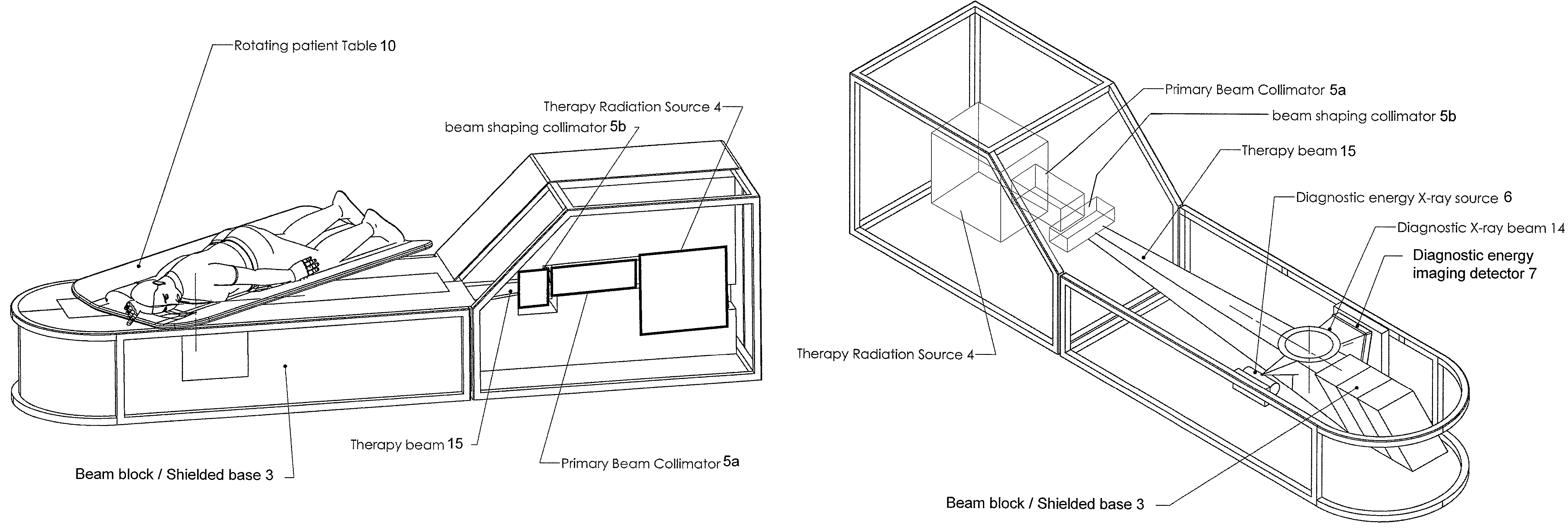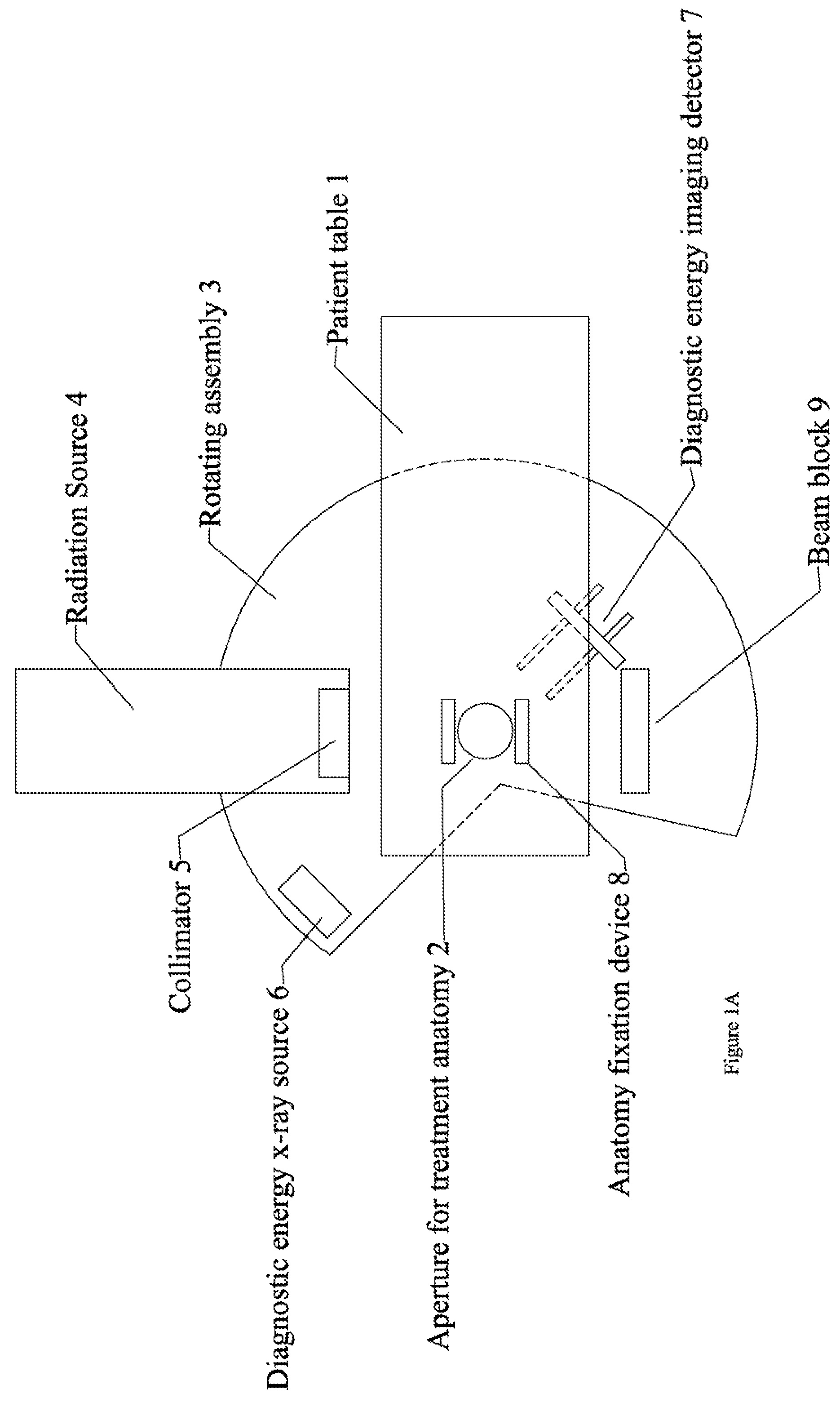Radiation therapy system for treating breasts and extremities
a radiation therapy and breast technology, applied in the field of radiation therapy system for breasts and extremities, can solve problems such as triggering cancer growth in patients, and achieve the effects of large installation footprint, large construction cost, and maximum separation of target volum
- Summary
- Abstract
- Description
- Claims
- Application Information
AI Technical Summary
Benefits of technology
Problems solved by technology
Method used
Image
Examples
Embodiment Construction
[0024]This invention relates to the devices and methods for delivering an accurately located dose of radiation to a predetermined target volume within an anatomical site such as a breast. The following description and figures illustrate both a machine configuration where the patient positioner is non-rotating, and a machine configuration where the patient positioner rotates around a non-rotating radiation source and optional imaging system, which is geometrically equivalent.
[0025]Referring to FIGS. 1A and 1B, a radiation therapy system of the present invention comprises a patient interface surface shown as a patient table 1 with an aperture 2 above a rotational assembly 3 carrying a radiation source 4 with beam shaping collimator 5, a diagnostic x-ray source 6, and an imaging detector 7, which can have a moveable position. An optional anatomy fixation device 8 holds the extremity of interest in a fixed position during the imaging and therapy phases of machine operation and is mounte...
PUM
 Login to View More
Login to View More Abstract
Description
Claims
Application Information
 Login to View More
Login to View More - R&D
- Intellectual Property
- Life Sciences
- Materials
- Tech Scout
- Unparalleled Data Quality
- Higher Quality Content
- 60% Fewer Hallucinations
Browse by: Latest US Patents, China's latest patents, Technical Efficacy Thesaurus, Application Domain, Technology Topic, Popular Technical Reports.
© 2025 PatSnap. All rights reserved.Legal|Privacy policy|Modern Slavery Act Transparency Statement|Sitemap|About US| Contact US: help@patsnap.com



